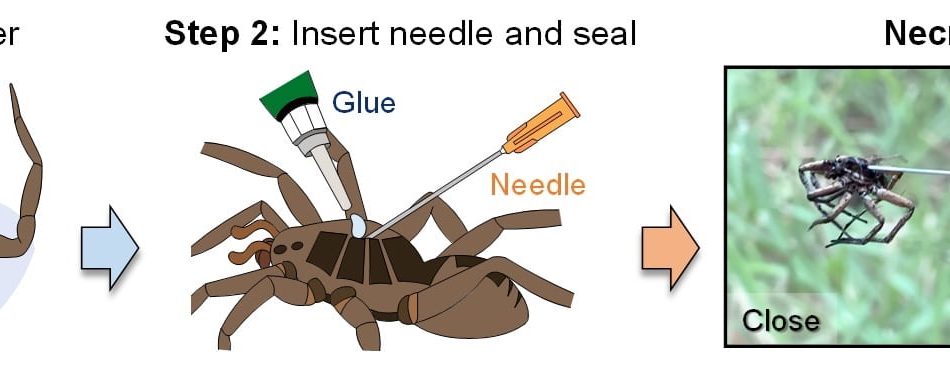They can grab things like they were alive
For many people, spiders are scary creatures, even when they are not real. However, this time scientists have done something a little weirder: they used real dead spiders and made them move with the help of technology.
It’s what mechanical engineers experimented with at Rice University. As reported, they called these kinds of zombies “necrobots” that can be used as mechanical grippers.
In bio-inspired techniques, designers take cues from an animal’s physical shape and apply them to intricate technological systems. Live or active biological elements provide the basis of biohybrid systems, requiring careful and accurate upkeep.
Rice University made a further step by introducing the field of “necrobotics” which employs biotic materials as robotic components, in this case, dead spiders.
In contrast to hard plastics, metals, and electronics, the team’s lab focuses on soft robotic systems, which frequently incorporate unconventional materials, according to research co-author Daniel Preston.
“The spider falls into this line of inquiry”, he says. “It’s something that hasn’t been used before but has a lot of potential”.
He noted that a dead spider’s body is the ideal structure for small, naturally occurring grippers because spiders employ hydraulics to move their limbs, as opposed to people and other mammals who synchronize opposing muscles.
They only have flexor muscles, which allow them to curl their legs inward, and hydraulic pressure is used to extend them outward. Additionally, the spiders can separately regulate each limb thanks to internal valves in their hydraulic chamber.
Once they die, they can no longer actively pressurize their bodies, so they curled up as a result, and researchers discovered how to make use of this process.

With a needle and some super glue, the researchers attached the gripper to the spiders’ hydraulic chamber. The other end of the needle was attached to a portable syringe or one of the lab’s test rigs. A modest amount of air was given as a result, nearly immediately activating the legs. They were able to simultaneously manipulate all of the spider’s legs as a result.
The team chose to use wolf spiders and tests revealed that they were capable of lifting more than 130% of their own body weight. The grippers were used to raise another spider, move things, and even operate a circuit board.
Additionally, they discovered that the necrobot could sustain around 1,000 open-close cycles before showing symptoms of wear and tear.
“There are a lot of pick-and-place tasks we could look into, repetitive tasks like sorting or moving objects around at these small scales, and maybe even things like the assembly of microelectronics,” Preston says.
Given that smaller insects are naturally disguised, utilizing necrobots to catch them in the wild is another possible use.
Sustainability is another reason. “The spiders themselves are biodegradable,” Preston explains. “So we’re not introducing a big waste stream, which can be a problem with more traditional components”.
Mixing biology and technology could lead to more scary scenarios, although it could be useful and sustainable. If you think a spider or any horrible creature could be turned into a sort of cyborg ready to chase you or spy on you, it sounds more frightening than a classic robot. Imagine humans turned into zombies with technology. There would be ethical issues and more dangerous consequences that would be hard to handle.
Sometimes the price for sustainability seems to lead us more toward something grotesque than toward something actually satisfying.
